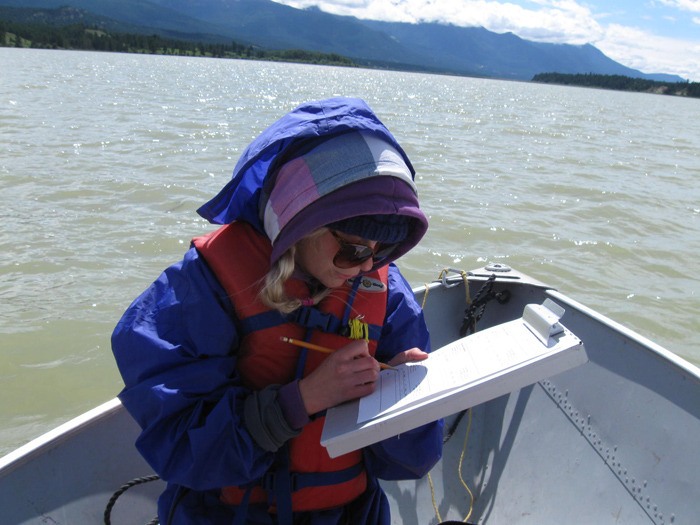The Lake Windermere Ambassadors’ Regatta is just around the corner. The festivities will be held July 21, from 1 to 5 p.m. on Kinsmen Beach. The regatta is a celebration of Lake Windermere and the people who love it. Come down and take part in exciting activities including swim, paddleboard, kayak and sailboat races and a volleyball tournament. There will also be informational hands-on activities including an invasive species prevention demonstration and a “Learn Your Lake” trivia contest.
In order to win the trivia contest, study this article about Lake Windermere fun facts and enter to win great prizes at this year’s regatta.
How big is the lake?
Lake Windermere is 17.7 kilometres long with an average width of 1.1 km. It has a mean depth of 3.4 metre and maximum depth of only 6.4 m. The shoreline perimeter of the lake is 36.3 km.
What are its surroundings?
Water flows into Lake Windermere from two mountain ranges — the Rocky Mountains and the Purcell Mountains. There are a total of nine creeks that enter Lake Windermere: Madias, Windermere, Holland, Abel, Goldie, Brady, Johnson, Ellenvale and Salter. Windermere Creek has value for fish; it has major spawning and fish growth habitat for kokanee salmon. Columbia Lake and Lake Windermere are headwaters to the Columbia River. The water flowing downstream from Columbia Lake and the Columbia River remains in Lake Windermere for only 47 days before continuing its flow downstream. This is an extremely short water retention time, considering the retention time in Christina Lake is several years.
What is living in Lake Windermere?
There are over 300 bird and mammal species that call the Columbia wetlands home. There are many species of fish that live and breed in Lake Windermere, including rainbow trout, bull trout, kokanee, mountain whitefish, sculpin, largescale sucker, redside shiner, northern pike minnow and burbot. Many species of aquatic plants are living in Lake Windermere. These can take the from of submerged (leaves completely under water), rooted-floating leaved (leaves above the surface), emergent (rooted and sticking about the surface) and free-floating plants.
What are some water quality characteristics of Lake Windermere?
Lake Windermere can reach 25 degrees Celsius in July. If the lake gets above this temperature in July, the Ministry of Environment’s objectives for protecting aquatic life have not been met. This is because warm water can’t hold as much oxygen as cooler water, which is a problem for both fish and plant life and the overall health of the lake.
Who uses the water in the Lake Windermere watershed?
Mining for gypsum, a material used in drywall, is occurring in the Windermere Creek watershed. The main type of agriculture in the Lake Windermere watershed is cattle ranching, whereas the main cultivated crops are hay and alfalfa. These activities all use the water of the Lake Windermere watershed. The largest licensed water withdrawal on Lake Windermere is irrigation at 86 per cent of all water used. That’s 1,964,325 cubic metres per year. Domestic use represents only six per cent of total use. A grand total of 2,307,789 cubic meters of water is drawn from Lake Windermere each year. Often our pets love to swim and play in and around the lake, but pet waste can have negative impacts on the lake water quality by being washed into the lake by rainstorms or flooding. Pet waste can pollute the lake with harmful bacteria, like E.coli. Boats are also a common sight on Lake Windermere during the summer months. You can help keep Lake Windermere a healthy ecosystem by cleaning your boat after each time it is in a lake. This prevents invasive plants and invasive mussels that might have attached to your boat from reaching other lakes. By cleaning, draining and drying your boat, you can prevent the spread of invasive species that can have negative impacts on lake ecosystem health and our economy.
Source: Information for this article comes from the Lake Windermere Management Plan, released January, 2011.
For more information, contact the Lake Windermere Ambassadors at 250-341-6898 or info@lakeambassadors.ca or visit our office located in the south annex of the Service BC building.
—Submitted by Kirsten Harma, Lake Windermere Ambassadors Program Co-ordinator
